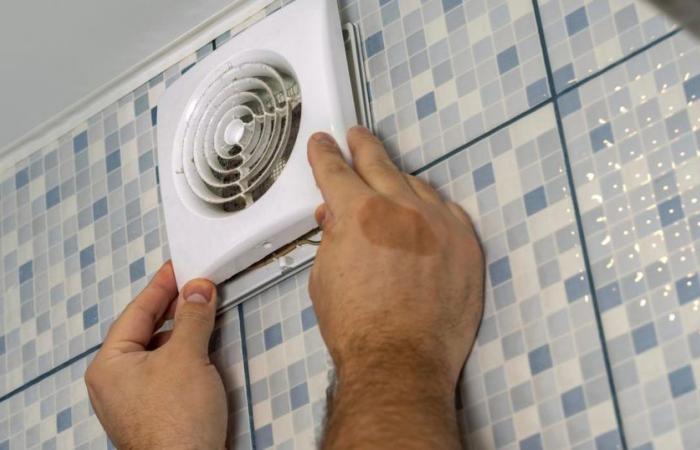Purring, whistling… The ventilation system in your home is no longer really discreet. For what ? How to react ? How to proceed ? Our answers.
You can no longer stand the constant buzzing of your controlled mechanical ventilation (VMC) ? However, this mechanism is essential to the quality of the ambient air in your home. Find out how to identify the causes of this noise and the solutions to remedy it. Also take advantage of some VMC maintenance tips to avoid noise pollution.
Why does my VMC make a lot of noise?
Single flow or double flow VMC (controlled mechanical ventilation) can be noisy for several reasons. This noise, often perceived as a humming or hissing sound, is generally due to vibrations and signals a malfunction of the device.
The main causes of this problem are usually due to:
- A lack of maintenance: over time, dirt and dust accumulate in the VMC ducts, clogging the system. Clean your ventilation at least once a year to remove these residues and prevent unwanted noise.
- Improper air flow adjustment: if the air flow is too powerful compared to the size of the room, noise pollution may appear, even without intervention on the device.
- A poorly positioned engine : If the motor is incorrectly installed, often in false ceilings or attics, or if it is defective due to wear, strange noises may occur.
- A VMC that is too old and worn.
To remedy a noisy VMC, several actions can be taken depending on your diagnosis:
- reduce air flow
- replace the motor in case of breakdown
- reattach and rebalance the motor if it is incorrectly positioned
- modify the length of the ducts
- change or replace worn sheaths, etc.
These interventions will reduce noise pollution and ensure the proper functioning of your VMC.
How can I spot an installation fault in my VMC and what should I do?
Start by checking the condition of your device and the equipment that makes it up: turbines, ducts, different air inlets and extraction box inlets.
To identify installation faults:
- Review the installation of the ducts to check that they connect the VMC box to the distribution grids as directly as possible.
- Adapt the diameter of the ducts to avoid whistling and reduce the speed of the distributed air. Air circulation in ventilation ducts must occur at a maximum speed of 5 m/s for vertical ducts and 6 m/s for horizontal ducts. This optimal speed is obtained through the use of ventilation ducts of suitable diameter. Ducts that are too tight and/or multiple bends can generate excess decibels. They must connect the VMC box to the distribution grids in a direct and natural way. A sheath diameter that is too small can create an unpleasant hissing sound.
- Check the position of the VMC box. It often happens that it is placed on the attic floor or near a ventilation outlet. In operation, the natural vibrations of the rotating elements are amplified and propagate through the ventilation ducts to the ventilated rooms. This problem can be solved by installing anti-vibration pads between the device and the floor, or by suspending the box in the void between several structural elements. The VMC box must occupy a central position in the attic, equidistant from the different ventilation outlets that it irrigates.
- Consider installation of noise-reduction devices to block the decibels of ventilation: insulating box to be placed around the VMC motor, soundproof air extraction vents, silencer for VMC duct to be placed on the ventilation duct sections to attenuate the propagation of acoustic waves, etc.
This way, you can minimize the noise pollution from your VMC.
How often should a VMC be maintained?
Taking care of your VMC ensures its proper functioning and optimizes its performance. Not only do you extend its lifespan, but you also reduce your heating consumption (energy savings) and limit the risk of humidity.
Here are some steps to take for regular maintenance :
- Every 3 to 6 months: clean the extraction and insufflation vents. Take them apart, wash them with water and a degreasing product (like dishwashing liquid) and let them dry before reattaching them. Also dust the air inlets with a vacuum cleaner.
- Once a year : check the filters of your VMC. If necessary, replace them or clean them with a degreasing product. Check the heat exchanger if you have a double-flow VMC.
- Every 2 to 3 years: carry out a complete check of the system, including cleaning the ducts and ducts.
Call an RGE professional (heating, refrigeration engineer, electrician) for complete maintenance of the VMC, ideally in spring or fall. He will thoroughly clean the ventilation circuits, maintain the ducts and the engine block, and check the fresh air inlets and ventilation ducts.
It is entirely possible to minimize noise pollution from your VMC. Don’t forget to regularly clean the components of your VMC and call a professional for complete maintenance every 2 to 3 years. This way, you will enjoy a healthy and comfortable environment without being bothered by the noise from your ventilation system.






